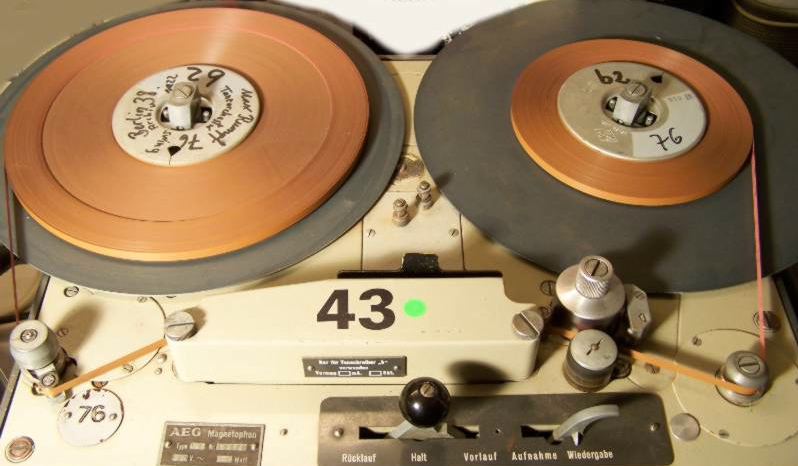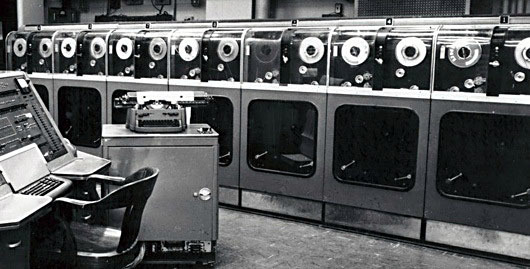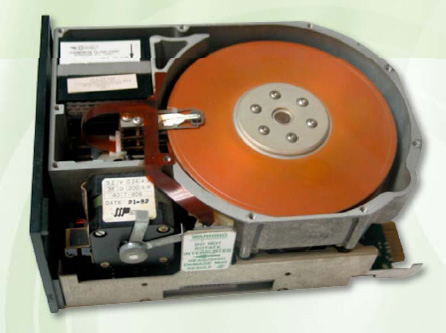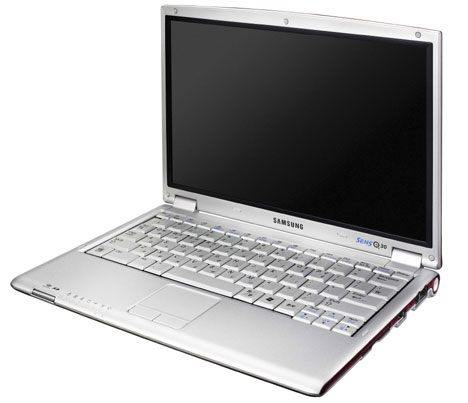Seagate History: From Floppy to HDD and SSD
On a single processor, computers would not have gone far, as well as on one RAM or drives in the form of audio cassettes. Several companies were at the origins of modern types of drives - HDD and SSD, survived floppy disks and punched cards. Today we will talk about the history of Seagate, which presented in 1980 the first hard disk with a capacity of 5 megabytes.

In the 1920s and 1950s, punch cards and punched tapes were used as a method of storing and transmitting information for computers. They came to the computer industry from looms. With perforation, the machines made a certain amount of lowering and raising the threads to display the pattern on the fabric. The speed of work with this carrier was low, a lot of time was spent on perforation of the data obtained in the process of calculations and the introduction of new punched cards into the machine for further calculations. The inventors at that time were working on relatively new ways of entering and storing data — on magnetic tapes and wire.
The magnetic recording method was patented in 1898 by the Danish physicist and engineer Waldemar Poulsen. As a carrier, he did not use tape, but wire. From the amplifier, the signal was fed to a recording head, along which the wire moved at a constant speed and magnetized according to the signal. In 1927, German engineer Fritz Pfleimer sprayed iron oxide powder onto thin paper and patented the method, but the patent was revoked due to the invention of thirty years ago. Both of these ideas were used by AEG, which introduced the Magnetophone-K1 in 1935 on a magnetic tape produced by the chemical concern BASF.
')

"Magnetophone-K1"
In 1950, the US National Bureau of Standards built the SEAC computer . In it, as the drives used metal wire in cassettes.

Magnetic wire cassette for computer SEAC
In 1951, for the first time, magnetic tape was used in a computer - at UNIVAC. The computer was built for the needs of the Air Force and the US Army topographic service. A UNISERVO drive with tapes of nickel-plated bronze 13 millimeters wide and up to 450 meters long was used as a carrier. One tape contained 1,440,000 six-bit characters.

UNISERVO Tape Drives for UNIVAC
Magnetic tape in household computers in the 1970s was used in the form of tapes. The programs were reproduced either with the help of special drives or with the help of ordinary home audio recorders. Magnetic tapes are still used - for example, they store the results of the Large Hadron Collider at CERN, NASA and some large corporations with huge archives work with them. They make backups when you need to store large amounts of data.
The advantage of this storage method is the price. IBM believes that up to 80% of corporate data can be written to tape. But for a low price you have to pay a low speed - access is carried out consistently, so you have to wait from several tens of seconds to a minute to get the desired file.
The problem of access speed in the 1960s was solved by Alan Shugart's team at IBM. Instead of tape, engineers have proposed a flexible magnetic disk with a casing. In 1971, IBM introduced the first 8-inch 80-kilobyte floppy disk and floppy drive.

Computer operator uses 8-inch floppy disk
After leaving IBM, Alan Shugart continued working with floppy disks. In 1973, he founded Shugart Associates with the money of investors, which soon introduced a 5, 25-inch mini-diskette as a replacement for the bulky 8-inch older brother. In September 1976, Shugart Associates offered a drive for $ 390 and ten diskettes for $ 45. In 1977, the company bought Xerox, and in 1986 sold the business to Narlinger Group.
The company developed the SCSI (Small Computer System Interface) interface, which was originally informally called the Shugart Associates System Interface.
It is symbolic that, in the 1976 edition of Computerworld, on one page fit was a note about the funeral of IBM punch cards and the launch of sales of mini-floppy drives from Shugart Associates.

Computerworld, 1976

5 1⁄4 inch floppy disk drive Shugart SA400
In 1979, Alan Shugart founded a new company - Shugart Technology. The goal of the enterprise was to create a hard disk the size of a disk drive for 5.25-inch floppy disks, but ten times faster and 15 times more capacity. The name could not be saved because Shugart Associates already existed in the same industry, created by the same person, but owned by another company. Therefore, Shugart Technology was renamed Seagate Technology.
A year after the founding of Seagate Technology, the company introduced the ST 506 hard disk with a capacity of 5 megabytes. Sales were successful due to two factors: a number of companies took Seagate drives as standard, and IBM chose this drive for their IBM PC / XT computer .
In 1981, a turning point came: the company released the ST-412, a hard disk that could hold 10 MB, using the RLL method for recording. The method added a disk up to 50% of the data transfer rate due to more dense data packing.

The PC / XT family of personal computers, IBM, unveiled on March 8, 1983. New PC models received 5.25-inch hard drives with a capacity of 10 or 20 megabytes.
In 1982, Seagate seized half of the market with sales of more than 40 million US dollars, and in 1984 became the largest manufacturer, selling hard drives for 344 million dollars. In 1986, the company produced 200,000 disks per month, in 1988 it shipped more than five million hard drives, thanks to the successful sales of the Commodore 64 PC .


In the early 1980s, the first commercially successful portable computer appeared - the 11-pound Osborne-1 with floppy disk drives. Compaq PORTABLE with a similar design appeared a bit later. Commodore SX-64 was the first laptop with a color display.
In the 1990s, devices became much lighter and more compact, the NEC UltraLite, which was first given the designation “laptop”, the Apple PowerBook 100 and the IBM ThinkPad, entered the market. Compact models needed an appropriately sized storage device. In 1990, Seagate offered a 2.5-inch hard drive.
In 1992, Barracuda discs entered the arena - the first HDDs with a spindle rotating at a speed of 7200 revolutions per minute. Their capacity was 6.8 gigabytes - this was enough to store nearly a hundred and fifty music albums. Four years later, a new line appeared - Cheetah with a spindle speed of 10,000 revolutions per minute.
In 1993, when the World Wide Web consisted of 130 sites, Seagate became the first company to sell 50 million HDDs. After a couple of years in the US, the number of households with one computer or more has exceeded 36 million.
Over 20 years, the capacity of hard drives has increased thousands of times. In 2005, there was a 500 gigabyte disk on my computer. By March 2012, Seagate was able to achieve a recording density of 1 terabit per square inch.
Not without problems. In 2009, Barracuda 7200.11 found an error that led to blocking the hard disk and the inability to access data without special equipment. Some users managed to recover data on their own, using information from friends and on forums.
In December 2014, Seagate began selling 8-TB hard drives . On a single magnetic disk inside the HDD fit 1.33 TB of data thanks to SMR technology, when recording is very close to each other, with almost no spacing between tracks, as when recording in the usual way.

In 1978, the American StorageTek developed the first modern-type semiconductor drive based on RAM memory. In 1982, similar drives made Cray for the Cray-1 and Cray X-MP supercomputers. These drives worked at a speed of 100 Mbit / s and 320 Mbit / s, respectively.
Disks on flash-memory appeared in 1995, they were presented by the Israeli company M-Systems. They were intended for the needs of the military and designed to work at high temperatures and strong vibrations, at which the usual technology broke.
Only in 2006, Samsung announced the world's first laptop with NAND-memory instead of HDD. It was a Samsung Q30, a laptop with a 12.1-inch display and 32 gigabytes of SSD memory. It was sold only on the Korean market at a price of $ 3,700. At the same time, the processor was not the smartest - 1.2 GHz Celeron M753.
For comparison: ThinkPad X60 with a 12-inch display with a resolution of 1400x1050, 80 GB HDD and an Intel Core 2 Duo L7400 processor with a clock frequency of 1.5 GHz cost $ 2,500 in Russia . For $ 3,500, you could buy an ASUS Lamborghini VX2 with an Intel Core 2 Duo T7400 with a clock speed of 2.1 GHz and a NVIDIA GeForce Go 7700 video card with 512 megabytes, which is the most powerful among notebooks at that time.


Seagate joined the production of SSD-drives in 2007, releasing a hybrid. A couple of years later the first SSD from the company came out
In 2016, ten years later, Seagate announced a 3.5-inch SSD with a capacity of 60 terabytes. Such devices are considered as a product for highly loaded scientific and / or meteorological systems that perform complex calculations.
In March 2016, Seagate introduced the fastest PCI Express SSD in the world with a capacity of 10 GB / s. The closest competitor from Samsung showed a result of only 5.6 GB / s.

In 2006, Seagate, chosen by Forbes as the company of the year, swallowed its rival, Maxtor Corporation. Before the deal, Maxtor was the third largest hard drive manufacturer in the world, it was founded in 1982 by three former IBM employees. The amount of the transaction amounted to 1.9 billion dollars. Samsung HDD cost the company less - at 1.4 billion dollars.
In 2011, Western Digital, Hitachi, Seagate, Samsung HDD and Toshiba had problems with the production of disks. Enterprises in Thailand, where they manufactured some important parts for the disks, flooded . Then Seagate completed the purchase of Samsung HDD . Under the terms of the deal, Seagate received all of the assets of the Samsung HDD unit, including most businesses, technologies, patents and employees. Along with the division, several top managers from Samsung have joined Seagate.
A year later, Seagate acquired a 64.5% stake in the French company LaCie, with which she had worked for a long time and produced some models of hard drives. The cost of the controlling stake was estimated at $ 186 million, which is quite a lot, even for large companies.
The largest HDD players at the moment are Western Digital, Seagate and Toshiba. The shares have hardly changed since 2012: WD took 43-44%, Seagate - 39-40%, and Toshiba slowly grew from 13.35% in 2012 to 17% in 2016.

In Wikipedia, the solid-state drive was defined as “a computer non-mechanical memory device based on memory chips that replaced the HDD”. We already have SSDs in both 500 GB and 1 TB, but we continue to use hard drives hard.
It is worth remembering the history of "soft" (flexible) drives : CERN uses magnetic tape to store the results of the Large Hadron Collider, except for them they combine clouds with NASA magnetic tapes and Discovery TV channel. And magnetic tape is a much more archaic, at first glance, tool for storing data.
In 2015, corporations collected less than 30% of all information, and by 2025, according to IDC, they will create about 60% of world data. Over the past ten years, the data was created mainly due to entertainment content, now the data volumes will grow due to automation and machine-to-machine interaction. "Classic" hard drives will continue to prevail in the market due to the ratio of price, speed and quality. As long as the prices for HDD and SSD are not equal, this is unlikely to change.

From the history of drives
In the 1920s and 1950s, punch cards and punched tapes were used as a method of storing and transmitting information for computers. They came to the computer industry from looms. With perforation, the machines made a certain amount of lowering and raising the threads to display the pattern on the fabric. The speed of work with this carrier was low, a lot of time was spent on perforation of the data obtained in the process of calculations and the introduction of new punched cards into the machine for further calculations. The inventors at that time were working on relatively new ways of entering and storing data — on magnetic tapes and wire.
The magnetic recording method was patented in 1898 by the Danish physicist and engineer Waldemar Poulsen. As a carrier, he did not use tape, but wire. From the amplifier, the signal was fed to a recording head, along which the wire moved at a constant speed and magnetized according to the signal. In 1927, German engineer Fritz Pfleimer sprayed iron oxide powder onto thin paper and patented the method, but the patent was revoked due to the invention of thirty years ago. Both of these ideas were used by AEG, which introduced the Magnetophone-K1 in 1935 on a magnetic tape produced by the chemical concern BASF.
')

"Magnetophone-K1"
In 1950, the US National Bureau of Standards built the SEAC computer . In it, as the drives used metal wire in cassettes.

Magnetic wire cassette for computer SEAC
In 1951, for the first time, magnetic tape was used in a computer - at UNIVAC. The computer was built for the needs of the Air Force and the US Army topographic service. A UNISERVO drive with tapes of nickel-plated bronze 13 millimeters wide and up to 450 meters long was used as a carrier. One tape contained 1,440,000 six-bit characters.

UNISERVO Tape Drives for UNIVAC
Magnetic tape in household computers in the 1970s was used in the form of tapes. The programs were reproduced either with the help of special drives or with the help of ordinary home audio recorders. Magnetic tapes are still used - for example, they store the results of the Large Hadron Collider at CERN, NASA and some large corporations with huge archives work with them. They make backups when you need to store large amounts of data.
The advantage of this storage method is the price. IBM believes that up to 80% of corporate data can be written to tape. But for a low price you have to pay a low speed - access is carried out consistently, so you have to wait from several tens of seconds to a minute to get the desired file.
The problem of access speed in the 1960s was solved by Alan Shugart's team at IBM. Instead of tape, engineers have proposed a flexible magnetic disk with a casing. In 1971, IBM introduced the first 8-inch 80-kilobyte floppy disk and floppy drive.

Computer operator uses 8-inch floppy disk
Foundation of Seagate Technology
After leaving IBM, Alan Shugart continued working with floppy disks. In 1973, he founded Shugart Associates with the money of investors, which soon introduced a 5, 25-inch mini-diskette as a replacement for the bulky 8-inch older brother. In September 1976, Shugart Associates offered a drive for $ 390 and ten diskettes for $ 45. In 1977, the company bought Xerox, and in 1986 sold the business to Narlinger Group.
The company developed the SCSI (Small Computer System Interface) interface, which was originally informally called the Shugart Associates System Interface.
It is symbolic that, in the 1976 edition of Computerworld, on one page fit was a note about the funeral of IBM punch cards and the launch of sales of mini-floppy drives from Shugart Associates.

Computerworld, 1976

5 1⁄4 inch floppy disk drive Shugart SA400
In 1979, Alan Shugart founded a new company - Shugart Technology. The goal of the enterprise was to create a hard disk the size of a disk drive for 5.25-inch floppy disks, but ten times faster and 15 times more capacity. The name could not be saved because Shugart Associates already existed in the same industry, created by the same person, but owned by another company. Therefore, Shugart Technology was renamed Seagate Technology.
Race for capacity and speed
A year after the founding of Seagate Technology, the company introduced the ST 506 hard disk with a capacity of 5 megabytes. Sales were successful due to two factors: a number of companies took Seagate drives as standard, and IBM chose this drive for their IBM PC / XT computer .
In 1981, a turning point came: the company released the ST-412, a hard disk that could hold 10 MB, using the RLL method for recording. The method added a disk up to 50% of the data transfer rate due to more dense data packing.

The PC / XT family of personal computers, IBM, unveiled on March 8, 1983. New PC models received 5.25-inch hard drives with a capacity of 10 or 20 megabytes.
In 1982, Seagate seized half of the market with sales of more than 40 million US dollars, and in 1984 became the largest manufacturer, selling hard drives for 344 million dollars. In 1986, the company produced 200,000 disks per month, in 1988 it shipped more than five million hard drives, thanks to the successful sales of the Commodore 64 PC .


In the early 1980s, the first commercially successful portable computer appeared - the 11-pound Osborne-1 with floppy disk drives. Compaq PORTABLE with a similar design appeared a bit later. Commodore SX-64 was the first laptop with a color display.
In the 1990s, devices became much lighter and more compact, the NEC UltraLite, which was first given the designation “laptop”, the Apple PowerBook 100 and the IBM ThinkPad, entered the market. Compact models needed an appropriately sized storage device. In 1990, Seagate offered a 2.5-inch hard drive.
In 1992, Barracuda discs entered the arena - the first HDDs with a spindle rotating at a speed of 7200 revolutions per minute. Their capacity was 6.8 gigabytes - this was enough to store nearly a hundred and fifty music albums. Four years later, a new line appeared - Cheetah with a spindle speed of 10,000 revolutions per minute.
In 1993, when the World Wide Web consisted of 130 sites, Seagate became the first company to sell 50 million HDDs. After a couple of years in the US, the number of households with one computer or more has exceeded 36 million.
Over 20 years, the capacity of hard drives has increased thousands of times. In 2005, there was a 500 gigabyte disk on my computer. By March 2012, Seagate was able to achieve a recording density of 1 terabit per square inch.
Not without problems. In 2009, Barracuda 7200.11 found an error that led to blocking the hard disk and the inability to access data without special equipment. Some users managed to recover data on their own, using information from friends and on forums.
In December 2014, Seagate began selling 8-TB hard drives . On a single magnetic disk inside the HDD fit 1.33 TB of data thanks to SMR technology, when recording is very close to each other, with almost no spacing between tracks, as when recording in the usual way.

Solid State Drives and Hybrids
In 1978, the American StorageTek developed the first modern-type semiconductor drive based on RAM memory. In 1982, similar drives made Cray for the Cray-1 and Cray X-MP supercomputers. These drives worked at a speed of 100 Mbit / s and 320 Mbit / s, respectively.
Disks on flash-memory appeared in 1995, they were presented by the Israeli company M-Systems. They were intended for the needs of the military and designed to work at high temperatures and strong vibrations, at which the usual technology broke.
Only in 2006, Samsung announced the world's first laptop with NAND-memory instead of HDD. It was a Samsung Q30, a laptop with a 12.1-inch display and 32 gigabytes of SSD memory. It was sold only on the Korean market at a price of $ 3,700. At the same time, the processor was not the smartest - 1.2 GHz Celeron M753.
For comparison: ThinkPad X60 with a 12-inch display with a resolution of 1400x1050, 80 GB HDD and an Intel Core 2 Duo L7400 processor with a clock frequency of 1.5 GHz cost $ 2,500 in Russia . For $ 3,500, you could buy an ASUS Lamborghini VX2 with an Intel Core 2 Duo T7400 with a clock speed of 2.1 GHz and a NVIDIA GeForce Go 7700 video card with 512 megabytes, which is the most powerful among notebooks at that time.


Seagate joined the production of SSD-drives in 2007, releasing a hybrid. A couple of years later the first SSD from the company came out
In 2016, ten years later, Seagate announced a 3.5-inch SSD with a capacity of 60 terabytes. Such devices are considered as a product for highly loaded scientific and / or meteorological systems that perform complex calculations.
In March 2016, Seagate introduced the fastest PCI Express SSD in the world with a capacity of 10 GB / s. The closest competitor from Samsung showed a result of only 5.6 GB / s.

Mergers and Acquisitions
In 2006, Seagate, chosen by Forbes as the company of the year, swallowed its rival, Maxtor Corporation. Before the deal, Maxtor was the third largest hard drive manufacturer in the world, it was founded in 1982 by three former IBM employees. The amount of the transaction amounted to 1.9 billion dollars. Samsung HDD cost the company less - at 1.4 billion dollars.
In 2011, Western Digital, Hitachi, Seagate, Samsung HDD and Toshiba had problems with the production of disks. Enterprises in Thailand, where they manufactured some important parts for the disks, flooded . Then Seagate completed the purchase of Samsung HDD . Under the terms of the deal, Seagate received all of the assets of the Samsung HDD unit, including most businesses, technologies, patents and employees. Along with the division, several top managers from Samsung have joined Seagate.
A year later, Seagate acquired a 64.5% stake in the French company LaCie, with which she had worked for a long time and produced some models of hard drives. The cost of the controlling stake was estimated at $ 186 million, which is quite a lot, even for large companies.
The largest HDD players at the moment are Western Digital, Seagate and Toshiba. The shares have hardly changed since 2012: WD took 43-44%, Seagate - 39-40%, and Toshiba slowly grew from 13.35% in 2012 to 17% in 2016.

Future forecasts
In Wikipedia, the solid-state drive was defined as “a computer non-mechanical memory device based on memory chips that replaced the HDD”. We already have SSDs in both 500 GB and 1 TB, but we continue to use hard drives hard.
It is worth remembering the history of "soft" (flexible) drives : CERN uses magnetic tape to store the results of the Large Hadron Collider, except for them they combine clouds with NASA magnetic tapes and Discovery TV channel. And magnetic tape is a much more archaic, at first glance, tool for storing data.
In 2015, corporations collected less than 30% of all information, and by 2025, according to IDC, they will create about 60% of world data. Over the past ten years, the data was created mainly due to entertainment content, now the data volumes will grow due to automation and machine-to-machine interaction. "Classic" hard drives will continue to prevail in the market due to the ratio of price, speed and quality. As long as the prices for HDD and SSD are not equal, this is unlikely to change.
Source: https://habr.com/ru/post/401737/
All Articles